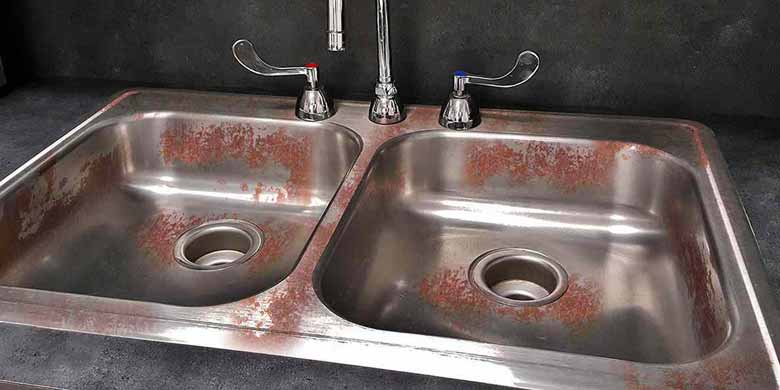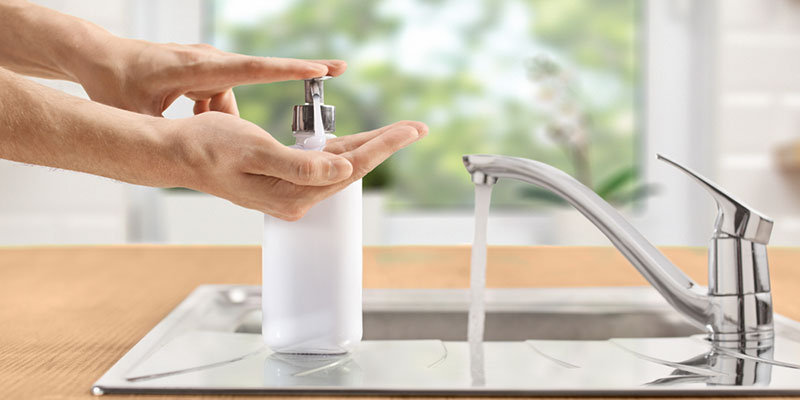How To Tenderize Flank Steak

Do you know how to get more flavor from the tough cuts of meats like flank steak, hanger steak, and chuck roast? Well, you can tenderize them to make them moist and get the most flavor from them. But the question is, how to tenderize flank steak?
If you think you need to know its answer, this webpage has it! Also, if you are a bit confused thinking about ‘is tenderizing meat worth it?’, you are welcome, we are going to answer it as well.
So, let’s jump into the main point without having more chitchats.
How to Tenderize a Flank Steak
There are two conventional ways of tenderizing a flank steak. Both of the options require following some easy steps.
Way 1: Tenderize with Force
You can tenderize the meat using force. How? Let’s see.
Step 1: Place Your Steak onto a Flat Surface
Remember, you should always work with fresh steaks that you have got out of your fridge but are not totally frozen. And, while working on a surface, make sure it is properly sanitized.
Moreover, some types of cutting boards like natural fiberboards cannot be utterly sanitized after working with meat products on them. For this, you should use a separate board that you use only for meat products. Or, you can go for glass or plastic cutting boards since they will be safe enough if you sanitize them perfectly after working with meat on them.
Also, you should think about the sturdiness of your cutting board, it’s not only the material that matters. When you will pound out the steak, you are to use a large amount of force, so, if your cutting board is made of thin glass, well, it’s not the best option.
Step 2: Wrap Your Steak into a Plastic Wrap
Now, take a plastic wrap to cover the meat, but why do it- that cover will prevent loss of juices and cross-contamination. Also, if you can make sure that you wrap the steak properly, it should minimize the contact between your cutting board and the meat juices.

But remember one thing, when you cover the meat with a sandwich bag or a plastic wrap, it’s going to expand in the area of the surface after pounding. So, confirm that there is desired space for the steak spreading out when you use the mallet.
Step 3: Pound the Steak
Start pounding the meat from the middle and try to pound it rhythmically. It’s better to apply firm pounds but make sure it’s effective enough. And, avoid using excessive force, just add a little outward push to the end, it should be enough.

If you are able to use the mallet properly, your steak is going to look attractive and plum instead of looking worn down or skinny. So, make sure you deal with the steak’s entire surface and flip it over. Then, start again.
What if using a mallet is not an option for you? Well, that will not create an issue because you can try with a wine bottle, rolling pin, or even with a cast iron pan. And, be sure about which size of mallet is ideal to use.
As a primary tenderizer, the triangular, spiky side of your meat mallet will work great. When you will poke holes in your steak, you will see the fibers torn apart. Once you apply heat, your steak will become more tender. For more efficient cooking, you can make a cutlet thinner and the hammer’s flat side is liable for thin cutlets.
A gentle reminder, once you use a meat mallet, the steak will look a bit defeated. However, you can hide this by adding a topping or simply breading it.
Way 2: Tenderize with Enzymes
Another way is to tenderize the steak using enzymes. See the details below.
Step 1: Pick the Right Marinade
Why we are saying you to choose the right marinade is, all the marinades will not work as a tenderizer actually. You should use marinades that come with an acidic ingredient like fruit juice or vinegar to tenderize the steak.
Moreover, you can pick the flavors or spices that you love. You can both make a marinaded at home or purchase it from the store.
About choosing the marinade, there is bromelain in pineapple juice which works like a champ when it’s about breaking the meat’s toughness. But one problem is- when you heat pineapple juice, it will be denatured. So, it’s important to use this juice in case of tenderizing the meat if it’s only fresh.
Step 2: Mix up The Marinade
While you are dealing with a marinade, you should end up having a literally smooth mixture. In case, you are working with the ingredients like kiwi or pineapple as the enzymes, you should use a food processor for making the marinade smooth enough.
And, if cooking the marinade is a must for you, let it be utterly cool before you mix it onto the meat. It will prevent your seak from boiling. Make sure there is a sufficient amount of marinade for covering the entire meat when you soak the steak in your marinade.
Since there are acidic ingredients in marinades, it’s a good idea to not use the metal bowls. What’s wrong with it? Well, the acid may react with the metal and you may end up having a funky taste from the steak.
Step 3: Maintain a Proper Marinating Time
How long it takes to marinate the steak matters. For example, if you are handling more tender cuts of the steak, they should take around two hours to marinate whereas if it’s a tougher cut (e.g rump roast), it’s better to soak it overnight.

The thing is, the longer time you are taking to soak your steak, the more tender you are going to have it. A simple rule is if you are tenderizing the meat for a noteworthy short time, use fruit marinades in this case. Otherwise, use vinegar or oil-based marinade for long-term marinating like overnight.
Step 4: Keep the Steak on The Lowest Shelf of Your Fridge
It’s not a good way to store raw meat on the countertop- hygienic issues, you know. So, you better store the steak on the lowest shelf of your fridge since it will prevent the meat from contaminating other foods.
Is Tenderizing Meat Worth It?
Definitely, it is. The process of tenderizing meat will make your steak softer as well as improve its texture. Also, you will find it easier to cut the meat and it will cut cooking time as well.
However, there are some things that should also be mentioned while we are talking about the whole tenderizing process.
How your meat tenderizer works is dependent on some things like whether it is a manual tool or an enzyme. The manual tool breaks down the cells’ bonds with the force you apply whereas the enzyme breaks those bonds chemically.
Also, you can use something else for making the meat softer including vinegar, ginger, beer that all break down the cellular bonds of your steak. The facts that matter the most while it’s about tenderizing meat is:
Meat Facts
Basically, meat is formed of muscle. Muscle fibers that build every cut of meat are bound together by collagen (a protein filament). You tenderize the meat means you break the muscles’ strands and soften the collagen prior to turning it into gelatin.
The soft gelatin will soak into your steak, tenderize it, as well as add moisture for making the meat juicer. You can either do the tenderizing job physical strength (e.g pounding) or with the help of a chemical reaction.
Tenderizer Facts
Most of the powered tenderizers come with two key ingredients- papain that is found in papaya, and bromelain from pineapples. These two enzymes attack both the collagen webs and the muscle fibers that hold them together. And, this is what softens your steak as well as converting it into a more tender one.
This is also a reason why you should not place pineapple or raw papaya in gelatin desserts. Both the bromelain and papain work for breaking down the gelatin.
Best Meat Tenderizers in a Video Review
Pro-Con List For Tenderized Meat
To know more about tenderizing meat, here you go with a pro-con list so that you can determine whether you are up for this or not.
- You can have a ‘high in protein meal’ on a budget if you tenderize the tough cuts of meat.
- If you cook leaner meats this means you save fat and calories.
- Tenderizing meat saves your cooking time since many lean cuts take hours to be done.
- It ensures your meat is cooked evenly and there’s the right thickness in the meat.
- Tenderizing makes the meat softer as well as improves its texture.
- Meat that is already soft can be unpleasantly squishy if you tenderize it.
- If you use a commercial meat tenderizer, listen to many of those tenderizers that come with a large amount of sodium and monosodium glutamate that cause people to have nausea and headaches. So, don’t forget to read the labels carefully before you purchase a commercial meat tenderizer.
Alternatives Tenderizers
While you are not able to have the products that are sold as meat tenderizers, there are other options. Most of them are acidic ingredients such as tomatoes, ginger, even acidic beverages like soda, beer, coffee.
These all work great to break down the bonds holding the cells of the meat together, but they do the same thing with acid, instead of enzymes. Also, fermented milk products (such as yogurt) and baking soda also work great for softening the meat enzymatically.
Precautions
Yes, most of the meat tenderizers are effective enough, however, it’s really important to make sure that you use them in the right way for getting the best outcome.
As we said before, you should not use enzymatic and acidic substances in metal cookware because there’s a chance of them reacting as well as affecting the color and flavor of your steak.
Moreover, enzymatic tenderizers become inactive at a certain temperature, but if it doesn’t reach the temperature while cooking, they will keep working.
For instance, papain does not become inactive if you cook the steak to medium heat as well as keep softening the leftovers, making them mushy.
You may find it difficult to anticipate how several types of ingredients in a recipe can interact with acidic or enzymatic tenderizers. However, if you want to get the best results from the process, you should be very careful about the recommended time to use every substance.
Frequently Asked Questions
- How To Inject Meat Without An Injector
- Best Meat Tenderizers for the Juiciest Steak and Roast Chicken
Conclusion
So, we are done talking about how to tenderize flank steak. After reading all of it, is there any confusion about if tenderizing meat is worth it or not? Hopefully, you are saying a no since we tried to cover up everything you should know about the topic.
Tenderizing meats means you are taking the moisture and taste of your steak to the next level. Just be sure that you follow every step so carefully that you don’t end up having an unpleasant result.
Have a great meal with perfectly cooked flank steak!



